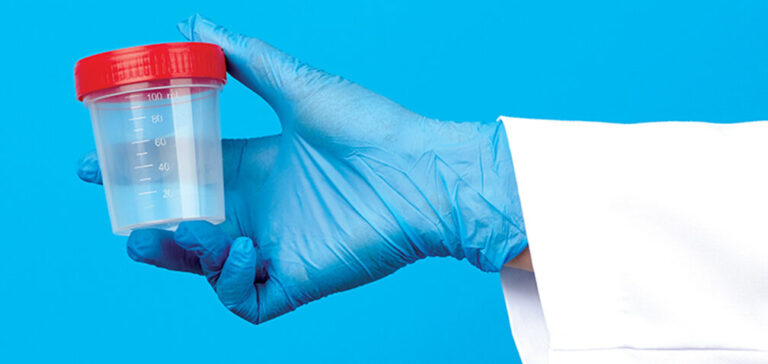A drug testing milestone was reached in January 2023: The Federal Motor Carrier Safety Administration’s (FMCSA) Drug and Alcohol Clearinghouse reached three years of age. With that milestone, the investigation process for thousands of new employees in the trucking industry changed — again.
Before the creation of the Clearinghouse, carriers were required to reach out to each of a new driver’s previous employers, for jobs held three years prior to the current hire, to determine if the employee had a positive drug or alcohol test or had refused to test. The process often involved researching contact information that the new driver couldn’t (or wouldn’t) provide. Driver consent, in writing, was necessary. In some cases, multiple requests were needed, and some reports proved impossible to obtain.
Under these “old” rules, a driver who tested positive for a controlled substance only had to find a new employer who did not follow the background check requirements. If the driver provided false information, the new employer might receive a false report or might not be able to make contact at all. Although the driver was required by regulations to follow a regimen prescribed by a substance abuse professional that included return-to-duty (RTD) testing, many drivers instead simply found another driving job.
That all changed with the implementation of the Clearinghouse. However, until three years of data were collected, it was still necessary to contact previous employers from jobs held prior to the creation of the Clearinghouse but still within the three-year period.
Since the program’s inception, the number of queries received by the Clearinghouse has grown — from about 4.3 million in 2020 to nearly 7 million in 2022. Since the Clearinghouse now contains three years of data, only a query to the Clearinghouse is necessary.
Something else that has changed is the drug and alcohol statistics now received by the FMCSA. In the past the reporting of test results and follow-up actions weren’t always reported. Today it is more difficult for a drug user to circumvent the system.
The results are astounding. In its January 23, 2023, monthly summary, the Clearinghouse reported 166,296 drivers have tested positive for at least one substance or refused to test. Of those, only 45,951 were reported in a “non-prohibited” status, meaning they had successfully completed a follow-up RTD testing plan. Less than 28% of drivers who were prohibited from performing safety-sensitive functions were eligible to return to work.
While some drivers who failed substance testing completed at least a part of the RTD process, 91,523 (55%) never even started the process. That figure would seem to indicate that the program is working. Since drug users can no longer simply find another carrier, they instead choose to leave the industry.
Just as the drug-testing reporting process has been changing over the years, efforts have also been ongoing to change the methodology. For years, carriers and trade associations — including the Truckload Carriers Association — have advocated for hair testing to be included in the FMCSA controlled substance program. A formal request was considered and denied by the FMCSA in January of this year.
A different testing method that appears to have more traction is oral fluid testing.
The Department of Health and Human Services (HHS) announced in September 2019 that oral fluid would be approved as a second testing specimen. The U.S. Department of Transportation (DOT) has stated that it will update the regulations to include oral fluid testing, once approved by HHS. At this time, however, no collection device has been approved and no lab has been certified for the process.
In the meantime, a number of states have legalized the recreational use of marijuana. Today, the substance is legal in 22 states, with more expected to follow suit. Products that include marijuana or its active ingredient, THC, are widely available to the public for smoking, eating, or in tablet/capsule form.
The Clearinghouse reported a total of 101,512 positive tests for THC over the past three years, 57.2% of all positive drug tests for the period. Each year, the number of THC-positive tests has risen, from 55.1% in 2020 to 59.6% in 2022. The number of positive marijuana tests in 2022 rose by 31.6% compared to 2021 results and were 38.6% higher than 2020 results. Increased hiring or post-pandemic turnover may have been contributing factors, but the increased legal availability of marijuana can’t be discounted.
Another drug that’s frequently in the news is not yet included in the Clearinghouse results — fentanyl.
This potentially deadly drug is seeing increased use in the U.S., in part because it is often used to “boost” the euphoric effect of other drugs. In an unregulated illegal market, users have no way to verify the potency of the drug, and incidents of overdose are growing.
The DOT has been working on a testing policy for fentanyl since 2018 but must wait until regulations for oral fluid testing are updated. Once that is done, any revisions to FMCSA regulations will have to go through the revision process, and drug-testing panels must be changed to accommodate the new test regimen.
A January 26 webinar hosted by HireRight recommended employers review their drug and alcohol testing policies and include language about the use of legal marijuana and the usage of cannabidiol (CBD) oil. Also recommended were prominent posting of company policy, as well as providing education to supervisory and management employees about the symptoms and signs of impairment.
The rules for testing for reasonable suspicion of drug or alcohol use are precise. Failure to properly document the process may be grounds for disallowing a positive test result, so managers must be able to describe the reason for their decision to test.
In the ever-changing world of detecting and reporting drug use, the Clearinghouse has provided improved tools to carriers. It’s up to employers, however, to stay on top of changing testing and reporting requirements to make sure the drivers they put on the road are as safe as possible.
This article originally appeared in the March/April 2023 edition of Truckload Authority, the official publication of the Truckload Carriers Association.
Cliff Abbott is an experienced commercial vehicle driver and owner-operator who still holds a CDL in his home state of Alabama. In nearly 40 years in trucking, he’s been an instructor and trainer and has managed safety and recruiting operations for several carriers. Having never lost his love of the road, Cliff has written a book and hundreds of songs and has been writing for The Trucker for more than a decade.















